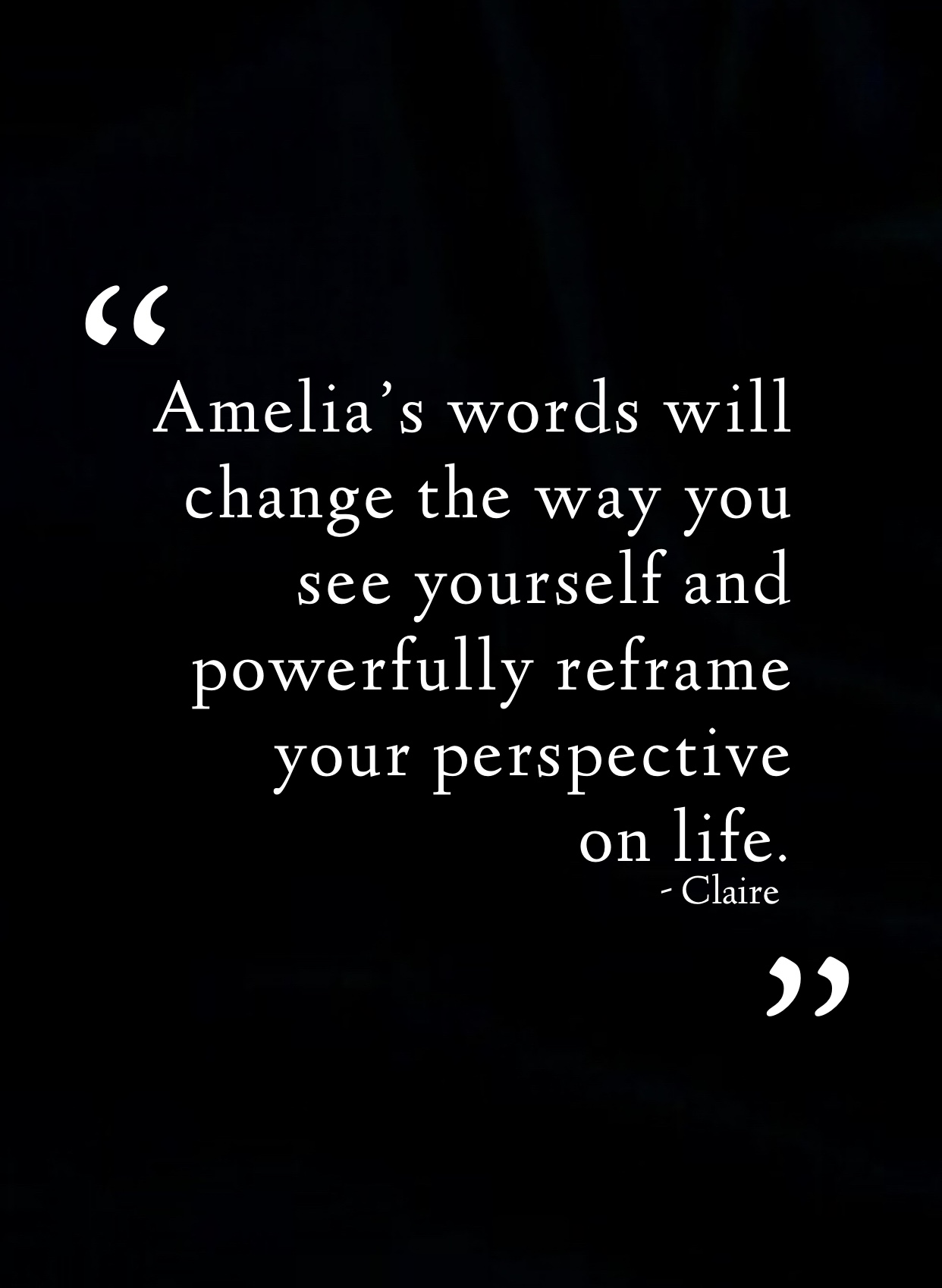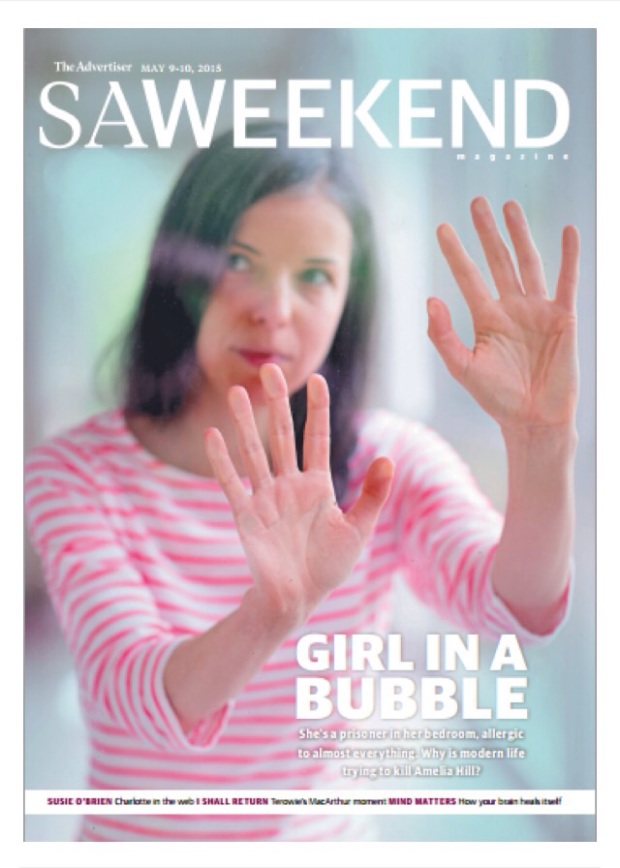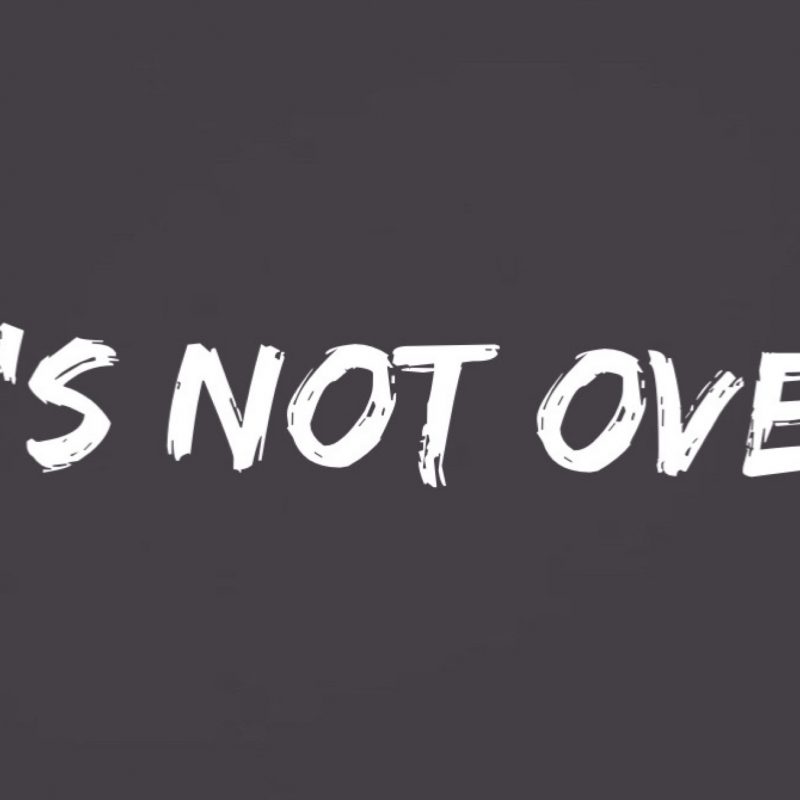Imagine if you could no longer just do the things you wanted to do … like see your best-friend get married, go to your niece’s school concert, gather around the family table at Christmas, hug your friends tight or even celebrate your own birthday … all because the perfumed products and washing powder residue on other people’s clothes made you sick, really sick.
What if you could no longer go to the places you needed to go … Like your workplace, the doctor’s surgery, the supermarket, chemist, bank, a public toilet, the houses of family & friends or even your own home, because the common chemicals found there in the air fresheners, pest sprays, cleaning products, building materials & furnishings made you really sick as well.
What if the television, computer, telephone, oven, washing machine or even the heating & cooling was off limits too?
What if, your entire life was turned UPSIDE DOWN and STRIPPED BARE of all the joys, experiences & the people you loved?
Well, for me, like many other people around the Globe, this is what it’s like to live with Multiple Chemical Sensitivity or MCS.
All I ever wanted was to live an amazing life … to travel the world, follow my dreams, have a family of my own. Instead, I’m confined to one bare room most of the time … trying to survive in a world chock-full of chemicals.
May 12 is International MCS Awareness Day
As I sit here, seperated from a world that I long to be apart of, and a future, I refuse to give up hope for, I make this humble, yet urgent request. On behalf of MCS suffers everywhere, I appeal to ALL governments and health professionals for recognition, research, much needed treatments, community support and access to public places, workplaces and basic health care like everyone else.
What can YOU do to make a difference?
* Reduce or eliminate chemicals in your home, workplace & public spaces.* Choose natural materials, fragrance free products & certified organic produce.
* Donate to a charitable organisation that provides important support & community services to people living with MCS … like
AESSRA in Australia,
RESHELTER in the U.S. &
MCS AWARE in the UK.
For a moment, put yourself in the shoes of someone experiencing the profound isolation & daily challenges of Multiple Chemical Sensitivity and remember – We ALL share the air on this planet. So let’s make ours HEALTHY & CHEMICAL-FREE, and then it CAN be an amazing life for EVERYONE …for you AND for me.
PS – To learn more about MCS go HERE
to read about my story go HERE
& see below for my ‘International MCS Awareness Day’ PRESS RELEASE.
[photo credit- James Knowler]
A BIG thank you to Adelaide newspaper, ‘The Advertiser’ for featuring my story on the cover of ‘SA Weekend Magazine’ on Saturday (9/5) to coincide with MCS Awareness Day/Month…I so appreciate your support! And thank you to journo, Petra Starke for her kindness & great copy!
To read the online version go HERE
FOR IMMEDIATE RELEASE
Amelia Hill
amelia@ameliahill.com
www.ameliahill.com
INTERNATIONAL MULTIPLE CHEMICAL SENSITIVITY (MCS) AWARENESS DAY
RAISES THE ISSUE OF ISOLATION & HUMAN RIGHTS AMONG SUFFERERS.
Adelaide, South Australia:Today. When countless people around the world mark ‘International Multiple Chemical Sensitivity/MCS Awareness Day’ on May 12, (& for the entire month of May), many will be doing so from the forced confinement of their own home, like 39 year old South Australian MCS sufferer, Amelia Hill, who has been isolated from the outside world due to severe Multiple Chemical Sensitivity (MCS) & Chronic Fatigue Syndrome (CFS) for almost 6 years.
People with Multiple Chemical Sensitivity (MCS) are made sick by exposures to low levels of many common chemicals – such as perfume, pesticides, tobacco smoke, air ‘fresheners’, cleaning products, solvents and VOC’s found in paint, new carpets, building materials. Many of these chemicals at high levels, can make anyone sick, but chemically sensitive people can become extremely ill after exposures to even minute amounts of these substances (1). Chemically sensitive people also frequently react to foods, drugs, electromagnetic fields & wifi technology & fabric treatments added to clothing & bedding.
Symptoms include, but are not limited to, respiratory problems & asthma, fatigue, muscle weakness & pain, headaches, eye & skin irritation as well as anaphylaxis, seizures and other neurological symptoms. Reactions can occur after chemicals are inhaled, ingested, or absorbed through the skin.
Despite recent research showing physiological similarities in those with MCS (2), there is currently no universal diagnostic test or treatment protocol for MCS. Many sufferers report that doctors are still unfamiliar with the condition, describing unmet medical needs, delays in correct diagnosis or treatment for the wrong condition (3, 4).
The isolation imposed by chemical barriers and the lack of community understanding about MCS contribute to the often devastating nature of this illness.
One time fashion designer, magazine stylist & writer, Amelia Hill first became sick with MCS after living in a house treated with termite sprays at age 15 (5). After years of misdiagnosis, her condition deteriorated and she was forced to live in a single ‘Safe Room’, stripped bare of possessions and comforts of everyday life like floor coverings, bedding, heating/cooling, photographs & books etc. She once spent almost 9 months without television, telephone or lighting. Housebound, she has struggled to locate health practitioners willing to consult with her. Last year, in her kitchen, she had a tooth extracted without anaesthetic.
In addition to isolation, discrimination issues for MCS sufferers are also evident. Due to the vast amount of chemicals, air fresheners, perfumed candies, fragrances/aromas released into air conditioner, pesticide sprays & chemical cleaning products found in most public places & the fragranced products like perfume, aftershave, deodorant & hairspray worn by people found there … MCS sufferers are often unable to access basic community resources that most people take for granted .. e.g access to workplaces, places of worship, shopping centres, public libraries, transport, public toilets, movie theatres, parks, schools, offices of doctors, dentists & safe housing.
The Australian Human Rights & Equal Opportunities Commission (HREOC) acknowledges MCS as a disability covered in the Disability Discrimination Act 1992 & clearly includes chemical sensitivity in its document ‘Access to Buildings & Services- Guidelines & Information'(6) .. however, these strategies are rarely implemented & other government recommendations (4) have largely gone unanswered (7, 8).
A national survey of MCS sufferers (9) corroborates this with the following grim statistics:
·Nearly half the respondents were totally disabled, with two thirds unable to access disability and social services.
·61% were unable to access health services.
·96% were unable to access aged care services.
·89% were unable to access allied and respite care.
.Of those who could access health care, 63% said MCS Hospital Guidelines were not implemented.
·Nearly 90% of patients reported living in either a high or medium degree of isolation.
“It is no longer sustainable for the medical community to keep ignoring the size and sweep of this (MCS) epidemic.” says Dr. Martin Pall, a molecular bioscience researcher at Washington State University and author of the book “Explaining ‘Unexplained Illnesses.’ “(10).
“Reports from around the world indicate that chemical sensitivity is a global problem and the numbers seem to be growing.” Dr Ann McCampbell (1).
“Today we are witnessing a unique pattern of illness involving chemically exposed groups in more than a dozen countries” Dr Claudia Miller, Immunologist, Allergist & author of ‘Chemical Exposure: Low Levels High Stakes.’ (11).
“The problem of Multiple Chemical Sensitivities is, in my opinion, a toxic problem which will, over the next decade, affect almost everyone in some way.” Dr Mark Donohoe, Australian Environmental Medicine & MCS specialist.
“It (MCS) emerged with the advent of the chemical industry post World War 2 & appears to be afflicting more & more people. The most effect way to manage the condition, is to create a chemical-free living space and restrict or avoid chemicals in all ways in every day life.” Nicole Bijlsma, Founder of ‘The Australian College of Environmental Studies’ & author of ‘Healthy Homes, Healthy Families.’ (12)
Respondents in government health surveys in both South Australia (16) & New South Wales (17) 16.4 % & 24.6 % respectively, reporting chemical sensitivity and/or adverse health reactions to chemical exposures, highlights not only the urgent need for widespread recognition, but also fragrance-free & VOC- free policies in public places across Australia, like hospitals, nursing homes, schools, public toilets, housing & workplaces etc much like policies implemented in Canada & the US, (18, 19, 20, 21) allowing MCS sufferers to not only continue employment, but to also access essential health care & resources like everyone else in the community.
Despite living in one room for almost 6 years due to MCS, Amelia shares her story in the media (13), on her own website (14), & on social media (15), to raise much needed awareness for this devastating & often misunderstood illness.
Most people who develop MCS were once healthy individuals who tolerated chemical exposures like everyone else, until they had an exposure from which they did not recover (1). “It can happen to anyone,” Amelia says.
(1) Dr Ann McCampbell
(2) ‘Academic & Clinical Perspectives Ontario Centre for Excellence in Environmental Health’ Ontario Ministry of Health, 2013
Click to access Academic_Clinical_Perspectives.pdf
(3) Canadian Committee Health Survey, 2010
(4) ‘A Scientific Review of Multiple Chemical Sensitivity: Identifying Key Research Needs’ NICNAS, OCSEH, 2010.
Click to access MCS_Final_Report_Nov_2010_PDF.pdf
(5) “More than 40 studies on MCS across 5 countries including Australia, have shown one of the most common initiators of MCS is exposure to pesticides.” MCS America
(6) http://www.humanrights.gov.au/publications/access-guidelines-and-information#chem
(7) ‘Multiple Chemical Sensitivity in the Australian Workplace’ University of Adelaide, 2011. http://library.safework.sa.gov.au/attachments/60407/Multile-chemical-sensitivity.pdf
(8) South Australian Greens Member, Tammy Franks, 2012.
http://www.tammyfranks.org.au/2012/07/18/2271/
(9) Allergy, Sensitivity and Environmental Health Association of Queensland, in cooperation with the MCS reference group.
(10) Denver Post
http://www.denverpost.com/ci_13371037
(11) Dr Claudia Miller ‘The Compelling Anomaly of Chemical Intolerance’ Pub Med, 2001.
(12) http://www.buildingbiology.com.au
(13) http://www.ameliahill.com/media-links/
(14) http://www.ameliahill.com/my-story/
(15) https://m.facebook.com/groups/222486071170893/
(16) Fitzgerald 2008
(17) Centre for Epidemiology & Research, NSW Dept of Health 2003
(18) Harvard Teaching Hospital http://www.brighamandwomens.org/about_bwh/publicaffairs/news/publications/DisplayBulletin.aspx?articleid=1443&utm_campaign=Listly&utm_medium=list&utm_source=listly
(19) American Lung Association http://action.lung.org/site/DocServer/fragrance-free-workplace.pdf
(20) Canadian Human Rights Commission
Click to access policy_sensitivity_0.pdf
(21) MCS America- Fragrance Free Places.
http://mcs-america.org/index_files/FragranceFreePlaces.htm






